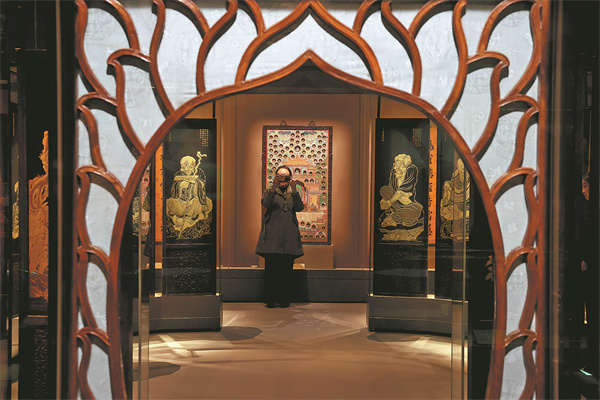Garden exhibition shows seeds of culture
Forbidden City event looks at how a small plot of land can inspire and nurture human creativity, Wang Kaihao reports.
By Wang Kaihao | China Daily | Updated: 2025-04-14 09:05

In this exhibition, visitors can appreciate various artworks related to gardens, not only those famous throughout Chinese history that reveal Zen and literati's refined taste, but also different styles across the world, including the villa garden of Pompeii in Italy, medieval monastery gardens, the Palace of Versailles in France and gardens from the Edo period in Japan.
Qianlong Garden is where to start the journey.
"It almost encompasses all the aesthetic interests of ancient Chinese garden-making," says Li Yue, the chief researcher on the Qianlong Garden project from the Palace Museum's department of architectural heritage.
"As we review the Qianlong Garden, it is not merely out of curiosity about an emperor's aesthetic taste, but also because it provides us with a thought-provoking perspective that is still inspiring: Is there another, more delicate, more serene, and more poetic way for humans to interact with nature and space?"
Resonance in space
The wooden gate carved with lotus patterns from the Building of Luminous Clouds (Yunguang Lou), the Buddhist hall in the Qianlong Garden, is a highlighted setting in the exhibition.
Through the gate, visitors may peep into a group of wooden screens depicting Buddhist deities, also from that hall, and nurture a contemplative moment like the retired emperor.
A pair of jade censers further create an atmosphere of tranquility. They are from the Hall of Imperial Peace (Qin'an Dian), a Taoist temple in the Imperial Garden in the north of Forbidden City.
Cloisters in a Nunnery, a German watercolor on loan from The Metropolitan Museum of Art in New York, will also catch the eye. The artist, Simon Quaglio, used light and shadow to highlight the elegant arches and exquisite columns within the garden of nunnery that also represents the strength of belief.
"When we designed this exhibition to put Chinese and overseas gardens together, it would be too abstract if we just display their typical elements and thus theoretically analyze their respective features," explains Zhu Yufan, a professor at Tsinghua University and a co-curator of the exhibition.
























